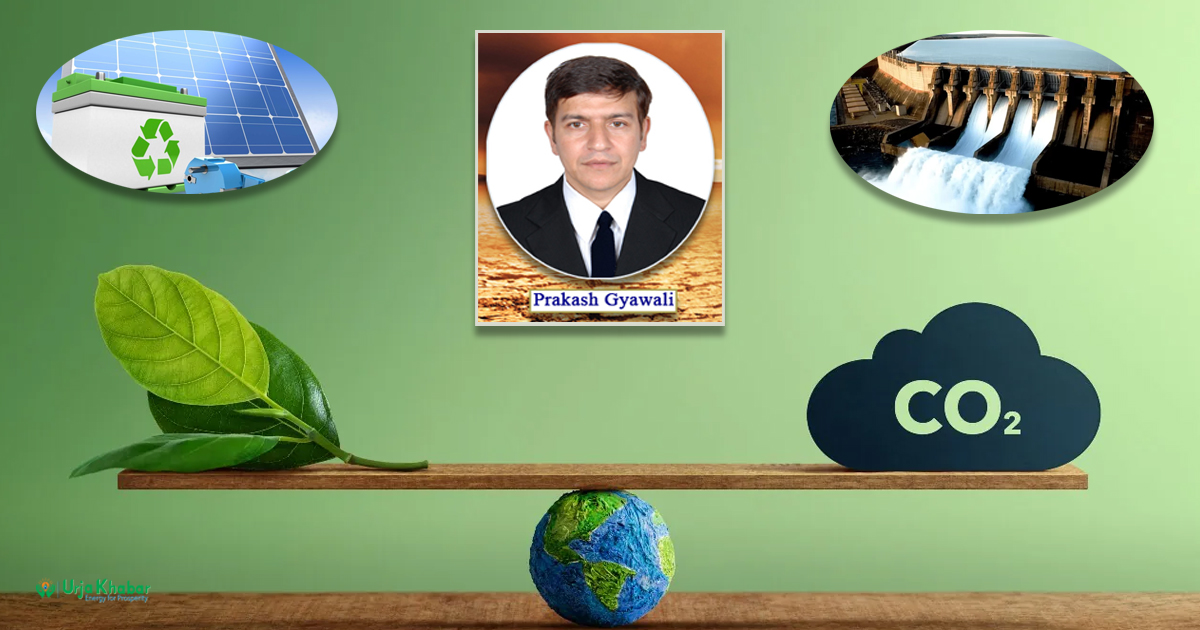
What Is a Carbon Footprint?
The term carbon footprint has become increasingly visible in public discourse, frequently appearing in Earth Day initiatives, sustainability labels, and climate change awareness campaigns. But beyond its widespread usage, it is essential to understand its precise meaning and implications. A carbon footprint refers to the total amount of greenhouse gases (GHGs) primarily carbon dioxide (CO₂) emitted directly or indirectly by individuals, products, activities, or organizations. It offers a measurable framework for assessing how our everyday decisions contribute to climate change. This measure is more than just a numerical value; it represents a tangible link between human behavior and environmental impact.

Activities such as driving a car, consuming electricity, purchasing goods, or even engaging in digital communication all generate emissions that accumulate in the atmosphere. Recognizing the scope of our carbon footprint allows for more informed and responsible decision-making. Therefore, a critical and foundational step in addressing the global climate crisis is not only raising awareness of individual and collective emissions, but also actively working to reduce them. By understanding our carbon footprint, we empower ourselves to adopt more sustainable practices and contribute meaningfully to climate mitigation efforts.
Moving Green: Rethink the Carbon Footprint

Transportation remains one of the most significant sources of global greenhouse gas emissions, playing a major role in accelerating climate change. The sector’s reliance on fossil fuels particularly petrol and diesel results in the continuous release of carbon dioxide (CO₂) and other greenhouse gases into the atmosphere. These emissions occur during everyday activities such as driving personal vehicles, flying on airplanes, or even idling in traffic, and they collectively contribute to rising global temperatures and environmental degradation. However, addressing transportation-related emissions does not necessarily demand drastic lifestyle changes. Rather, meaningful progress can begin with small, deliberate adjustments to daily habits.
Choosing to walk, cycle, or use public transportation instead of driving alone, adopting fuel-efficient or electric vehicles, and carpooling when possible are all accessible strategies that can significantly lower one’s carbon footprint. In this context, individual choices are not only practical responses to the climate crisis but also form part of a broader cultural shift toward sustainability. By rethinking how we move through the world, we contribute to a collective effort to mitigate climate impacts and promote healthier, more equitable communities.
Personal Transportation Choices and Their Role
In the context of reducing carbon emissions, individual transportation choices play a pivotal role. A critical self-assessment such as questioning the necessity of driving for every journey can lead to more sustainable alternatives. Opting to walk, cycle, or use public transportation for shorter distances presents not only a reduction in greenhouse gas emissions but also considerable benefits for personal health and well-being. Public transit systems, including buses and trains, emit significantly less CO₂ per passenger compared to single-occupancy vehicles. Even shifting a portion of weekly trips to these lower-emission modes can produce meaningful cumulative reductions over time.
When driving is necessary, adopting fuel-efficient driving behaviors is essential. Aggressive driving patterns characterized by frequent acceleration, sudden braking, and high-speed travel lead to unnecessary fuel consumption and increased emissions. In contrast, smooth and consistent driving at moderate speeds enhances fuel efficiency and reduces environmental impact. Additionally, minimizing the use of air conditioning, which increases energy demand, and maintaining the vehicle in optimal condition through tire pressure checks, engine tune-ups, and timely servicing further contributes to emission reduction.
Carpooling represents another practical and impactful strategy. Sharing a ride, even with one additional person, can reduce per capita emissions by up to 50%, while also alleviating traffic congestion and fostering community engagement. In essence, small yet intentional changes in transportation behavior, when adopted consistently, can significantly lower an individual’s carbon footprint and advance broader efforts toward climate mitigation
Thinking about buying a new car?
The transition to low-emission transportation presents a vital opportunity for individuals to reduce their environmental impact meaningfully. One of the most effective ways to do this is by opting for hybrid or fully electric vehicles (EVs). Unlike traditional internal combustion engine vehicles, EVs emit significantly fewer greenhouse gases over their lifetime. This is particularly true as electricity grids increasingly rely on renewable energy sources such as solar and wind, further enhancing the sustainability of electric mobility. In addition to their environmental benefits, EVs often offer long-term economic advantages.
Their operational costs, including fuel and maintenance tend to be lower due to the high efficiency of electric drive trains and fewer moving parts requiring upkeep. These savings, combined with potential government incentives in many regions, make EVs an increasingly accessible and attractive option for reliable consumers. While transportation emissions may appear to be an unavoidable consequence of modern life, they are in fact an area where informed and mindful choices can lead to significant positive change. Every decision, from how frequently we drive, to the type of vehicle we choose contributes to the broader effort to combat climate change. By embracing cleaner transportation technologies and adjusting our habits, we are not only supporting a more sustainable future but also demonstrating that individual action plays a critical role in global environmental stewardship.
The High Cost of Flying
Air travel is convenient, but it’s also one of the biggest climate culprits. A 500-kilometer flight for one person emits about 128–130 kg of CO₂ per kilometer, while a train trip covers the same distance with just 21 kg per kilometer. That’s 80% difference.
So, next time you’re planning a trip that doesn’t require crossing oceans, consider the train or bus. It’s easier on your wallet—and the environment.
Digital Life Leaves a Mark
Think the internet is eco-friendly? It might seem like an invisible world of instant communication and entertainment, but behind every email, Google search, or streamed video lies a vast physical infrastructure that uses massive amounts of electricity, most of which still comes from fossil fuels. Data centers, which store and deliver everything we do online, consume enormous amounts of energy to run servers and keep them cool 24/7.
So, while the digital world feels light and fast, it carries a surprisingly heavy carbon footprint. But you don’t have to give up technology to make a difference. Small, mindful changes in your digital habits can go a long way in reducing your personal emissions. Start by resisting the constant urge to upgrade your gadgets. Manufacturing a new phone or laptop generates a substantial amount of greenhouse gases so keeping your current device for a few more years is one of the greenest tech choices you can make.
Next, rethink your daily online activities. Skip sending unnecessary emails, especially those with large attachments. Use links instead of downloading files when possible. These small tweaks help reduce the workload on servers and limit data transfer, which in turn saves energy. You can also cut down on endless video streaming, perhaps switch to audio-only formats like podcasts where video isn’t essential.
Interestingly, even watching educational videos like this one contributes to emissions. Recording, uploading, and streaming all consume energy, reminding us that every action, no matter how small, has an environmental cost. But acknowledging that is a first step toward responsibility, not guilt. If our goal is progress, not perfection, then learning how to live more consciously, even online—can be a powerful way to help the planet.
As a bonus, these low-carbon habits also help reduce digital clutter and your own mental load. Less screen time, fewer emails, and more thoughtful engagement with technology can make life feel just a bit simpler and more peaceful while doing your part for the climate.
Small Choices, Big Impact
Solving climate change isn’t only the job of world leaders, scientists, or massive technological breakthroughs. It’s also deeply rooted in the small, everyday choices each of us makes. It’s about choosing to walk or bike instead of driving short distances. It’s about pausing before sending that extra email or thinking twice before upgrading to the latest phone when your current one works just fine. These decisions may seem minor on their own, but collectively, they have the power to reshape our planet’s future. What’s important to remember is that these actions aren’t sacrifices.
They’re not about giving things up, they’re about making conscious, meaningful choices that benefit both you and the environment. When you walk instead of driving, you’re not just cutting carbon, you’re improving your health. When you hold off on a gadget upgrade, you’re saving resources and money. Each of these steps is an investment in cleaner air, a more stable climate, and a healthier world for future generations. And the beauty is, they’re within your control, starting right now.
Final Thought: Change Starts with Self
We don’t need to be perfect to make a difference, we just need to be aware. The truth is that carbon footprints are invisible. We can’t see the emissions from sending a message, driving a short distance, or buying a new gadget but the effects are all around us, rising temperatures, unpredictable weather, melting ice, and struggling ecosystems. And while the scale of climate change can feel overwhelming, our individual choices still matter. Every time we choose to consume less, travel smarter, or power our lives more sustainably, we’re contributing to a global shift. Perfection isn’t the goal, progress is.
Nobody can make all the right choices all the time. But when each of us becomes more mindful of how our daily lives affect the planet, we begin to tip the balance. It’s about taking small, meaningful steps and recognizing that change starts with us, not someday in the future, but today. Let’s make a conscious effort to reduce waste, rethink how we live and consume, and reconnect—not just with nature, but with each other. Climate action doesn’t only happen in summits and laboratories. It happens in our kitchens, on our streets, in our schools, and in our hearts. Together, we can create a cleaner, fairer, and cooler world. After all, Earth is the only home we have—let’s take care of it, one mindful step at a time.
The writer is the PhD Scholar of King Mongkut’s Institute of Technology, Ladkrabang, Thailand
